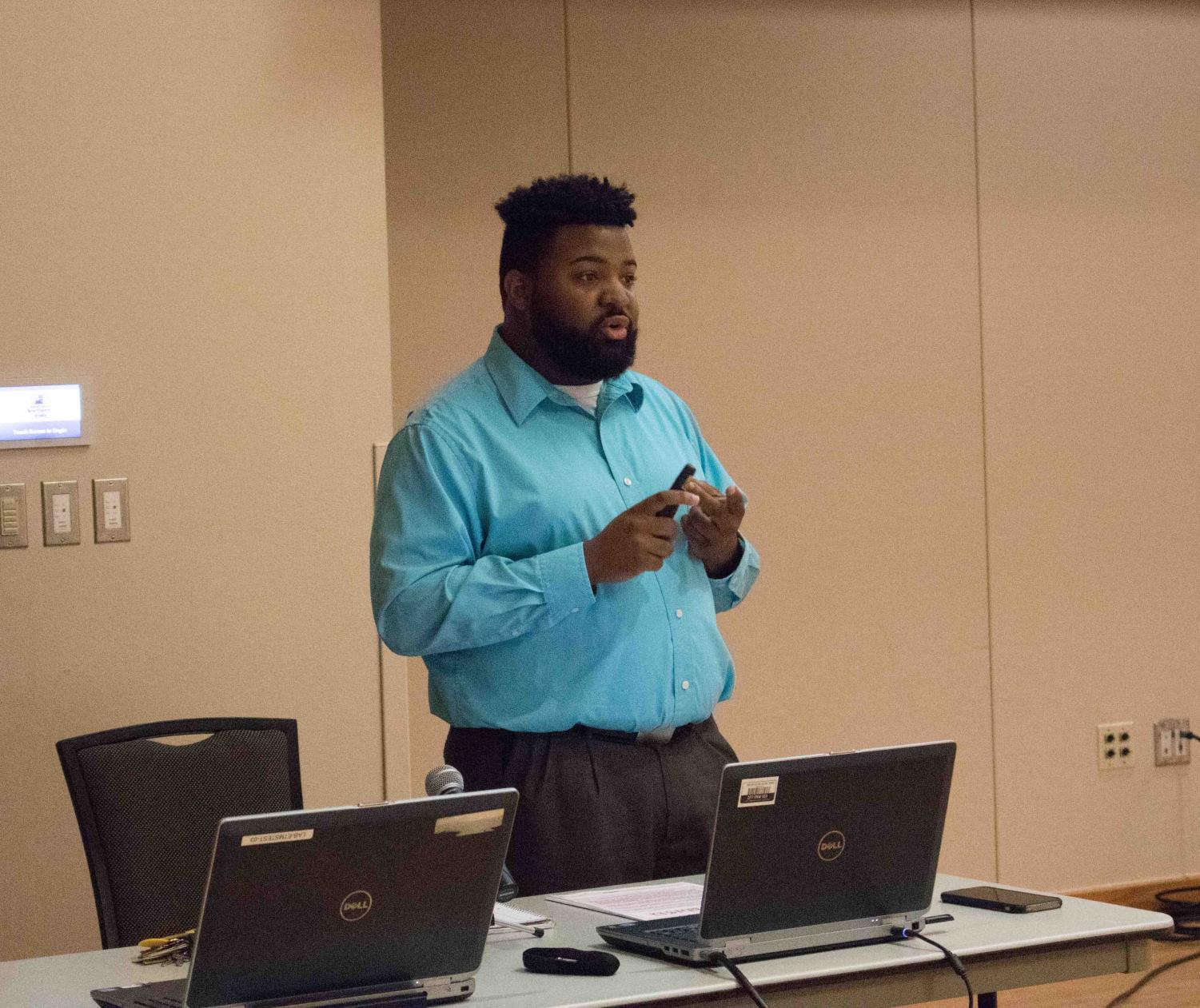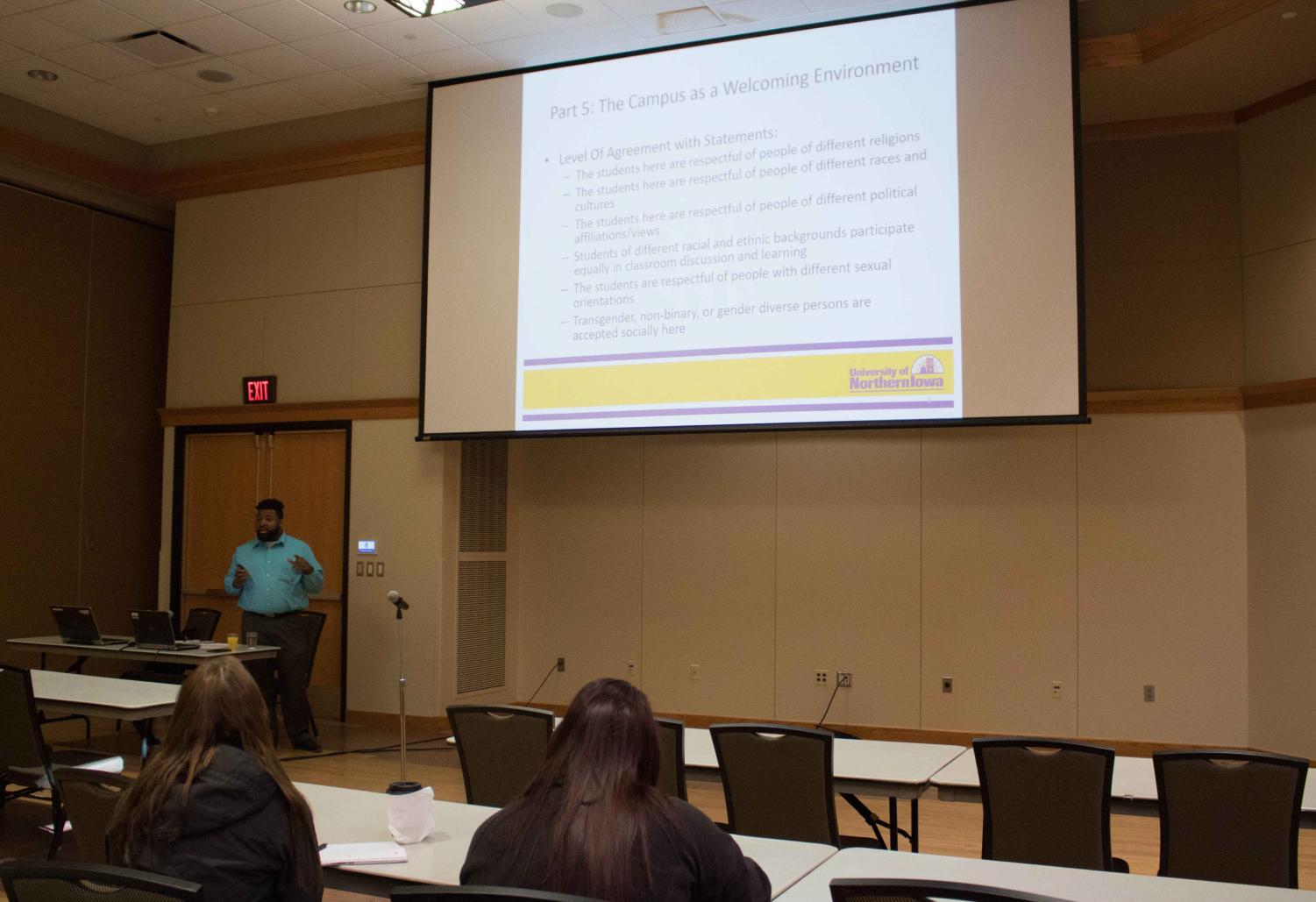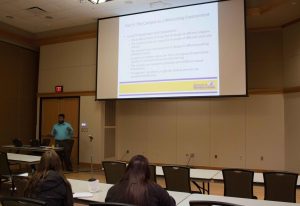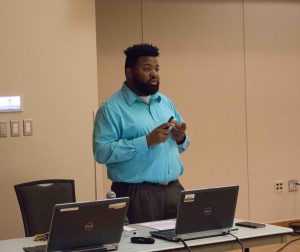The state of inclusion on campus
Apr 19, 2018
On April 12, 2018, then-Northern Iowa Student Government (NISG) Director of Diversity Darvel Givens presented the results of a survey regarding diversity that was sent to students at the end of October 2017. The results were recently presented in multiple sessions in the Maucker Union Ballroom.
“Diversity being the number one priority from the university’s strategic plan of student success, we definitely need to gauge where we stand as it pertains to diversity and inclusion so we’re not just making unrealistic assumptions,” Givens said of the survey’s goals. “We need to have a strong foundation.”
Givens went on to speak about how the survey actualizes facts about diversity and inclusion. He said that the survey demonstrated that there is work that still needs to be done regarding inclusion at UNI.
Givens then discussed the process of creating this survey. According to Givens, the goal was to figure out how to support diverse students as a representative of students.
Givens met with 50 student organization officers over the course of last summer. After the meetings, Givens analyzed qualitative data through survey instruments to find which type of survey to send to students.
Once selecting the survey instrument, it was revised by Gwenne Berry, the chief diversity officer, and Jamie Chidozie, the director of the Center for Multicultural Education (CME).
After this, Givens was given the approval to send out the survey.
3,004 students completed the survey.
According to the presentation given by Givens, students were asked to respond to 19 demographic questions and 45 actual questions regarding diversity.
The background information of these results included 84 percent people working towards their bachelor’s degree, 13 percent working towards their master’s degree, one percent pursuing a doctoral degree and two percent pursuing more than one. Of those pursuing these degrees, 86 percent were full-time undergraduate and seven percent were full time graduate students. The remainder were part-time students.
“I was really surprised by the questions he had and the percentage of the results he had,” one UNI student said in attendance.
The presentation went on to report experiences of diverse students on campus, including: sexual minorities, transgender people, non-native English speakers, people with disabilities, women and people with an array of political views. These populations were the basis of the rest of the presentation, and of these people, 90 percent of students have not heard faculty make derogatory comments and 97 percent of students have not heard administrators or staff make derogatory comments to students. Furthermore, 37 percent of discriminatory remarks were from students and eight percent were from faculty.
According to the presentation, there were many other points of improvement to be made for diversity on campus. Only 56 percent of students of color reported that they felt like they received adequate support from campus. Additionally, 20 percent of students reported that they did not understand the different types of loans they had regarding financial aid.
Givens went on to comment about what improvements need to be implemented on campus.
“Sometimes it’s not an issue of diversity and inclusion but more or less quality customer service. So, when people step into your scope of control, how are you making them feel when they step into that space?” Givens said. “I think tying quality customer service is a great place to start for diversity and inclusion.”











